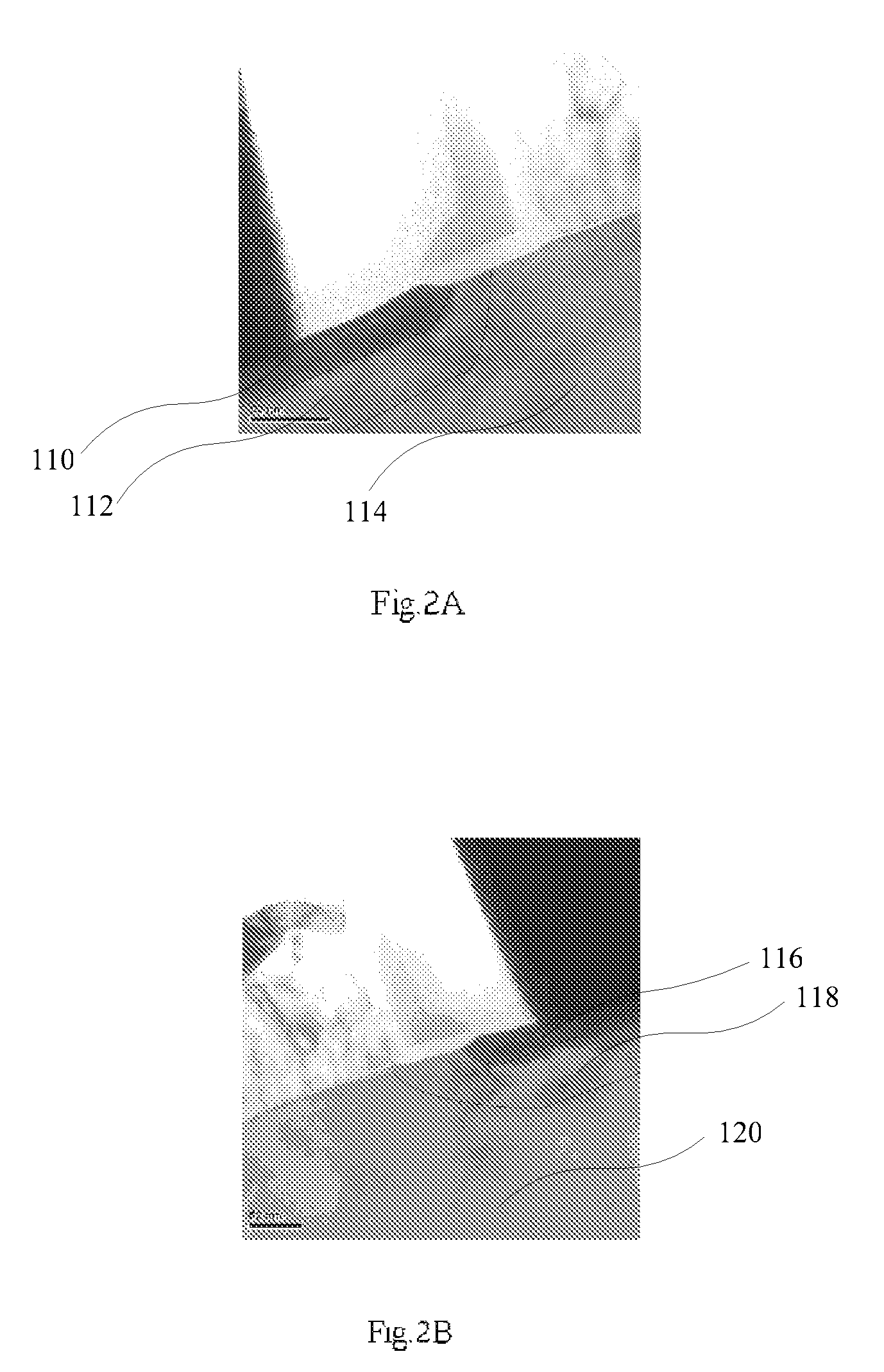Method of preparing a sample for transmission electron microscopy
a transmission electron microscopy and sample technology, applied in the direction of material analysis using wave/particle radiation, semiconductor device details, instruments, etc., can solve the problems of affecting the etching speed of the ion doped regions, the time-consuming sims method, and the damage to the semiconductor devi
- Summary
- Abstract
- Description
- Claims
- Application Information
AI Technical Summary
Benefits of technology
Problems solved by technology
Method used
Image
Examples
first embodiment
[0024]FIGS. 4A-4D are schematic diagrams of the procedure for preparing TEM samples according to the present invention. In the invention, as shown in FIG. 4A, the failure region 201 is first positioned on the sample 200 using an electrical positioning method, i.e., using an emission microscope (EMMI) or an optical beam induced resistance change (OBIRCH) tool. The sample 200 is placed into the FIB apparatus, and positions and dimensions of the pits are defined by a software in the FIB apparatus. The surface of sample 200 is bombarded by FIB with a current of 500 pA-7000 pA to form the pits 202 and 203 having a larger area than the failure region 201 at both sides of the failure region 201, so that the cross section of the failure region 201 can be observed during the subsequent process for milling the failure region 201, and the failure region 201 can be taken out from the sample 200 easily. The pits 202 and 203 are 10 μm-20 μm in length, 5 μm-10 μm in width, and 2 μm-5 μm in depth. ...
second embodiment
[0035]Next, the method for preparing TEM samples according to the invention is described referring to FIG. 4A to 4D. As shown in FIG. 4A, firstly, the failure region 201 is positioned on the sample 200 by an electrical positioning method, i.e., by means of EMMI or OBIRCH tool; next, the sample 200 is placed into the FIB apparatus, and the positions and dimensions of the pits are defined by a software in the FIB apparatus; next, the surface of the sample 200 is bombarded by FIB with a current of 5000 pA-7000 pA to form pits 202 and 203 having a larger area than the failure region 201 at both sides of the failure region 201, so that the cross section of the failure region 201 can be observed during the subsequent process for milling the failure region 201 and the failure region 201 can be taken out from the sample 200 easily; the pits 202 and 203 are 15 μm in length, 8 μm in width, and 6 μm in depth; the failure region 201 is 1μm.
[0036]As shown in FIG. 4B, the current for FIB is regul...
PUM
| Property | Measurement | Unit |
|---|---|---|
| current | aaaaa | aaaaa |
| length×width×depth | aaaaa | aaaaa |
| current | aaaaa | aaaaa |
Abstract
Description
Claims
Application Information
 Login to View More
Login to View More - R&D
- Intellectual Property
- Life Sciences
- Materials
- Tech Scout
- Unparalleled Data Quality
- Higher Quality Content
- 60% Fewer Hallucinations
Browse by: Latest US Patents, China's latest patents, Technical Efficacy Thesaurus, Application Domain, Technology Topic, Popular Technical Reports.
© 2025 PatSnap. All rights reserved.Legal|Privacy policy|Modern Slavery Act Transparency Statement|Sitemap|About US| Contact US: help@patsnap.com



